Photos: AT&T Shows Off Its Innovation
One year after making a big deal of its innovation centers, AT&T wanted to show it really has graduated from the old Bell Labs days
PALO ALTO, Calif. -- A year after opening its doors, AT&T Foundry held a small reception to show off some of what it's been doing.
Mostly, Wednesday's media event was a look at what AT&T Labs has been up to, with engineers and executives from around the country showing off their latest works. Some were fairly common ideas, such as a distributed antenna system for stadiums. Others seemed novel, such as ambient communications, a collaboration tool and work-in-progress that looks really cool, if nothing else.
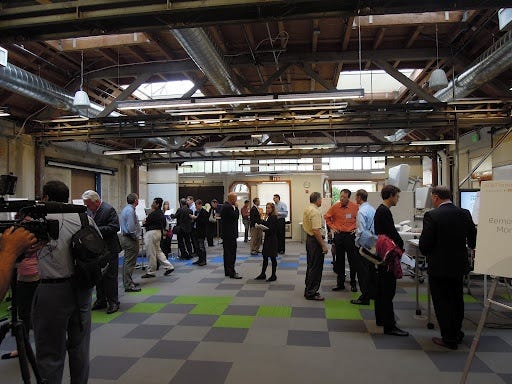
The Foundries -- there are two others in Plano, Texas, and Tel Aviv -- are meant to be community hubs for nurturing new ideas. They do happen to be AT&T's vehicle for working with startups, similar to the incubators and venture funds that other operators are setting up.
The lack of startups at Wednesday's event was disappointing, but the point was to show off the general innovation plan, which includes a pipeline for advancing employees' ideas and for helping other companies commercialize AT&T Labs's inventions.
You can click the photo above to launch a slideshow -- or, follow along, page by page. We've added some narration to explain a few of the demos in depth, starting with the sleek Ambient Communications.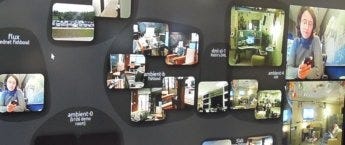
For more
AT&T Foundry Palo Alto Pics
AT&T Opens Silicon Valley Developer Den
From AT&T Labs: A New(er) Network Vision
Battle of the Carrier Innovation Centers
The Force Behind AT&T's Foundry
— Craig Matsumoto, Managing Editor, Light Reading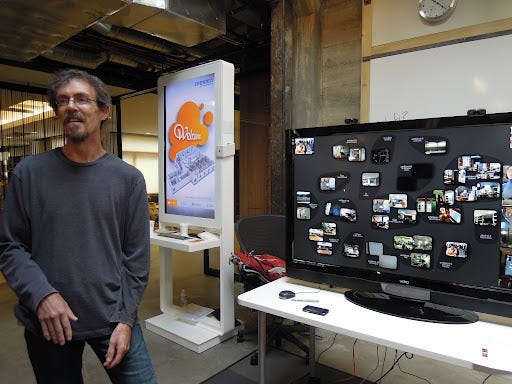
Ambient Communications was the big attention-getter. It's a pinboard of colleagues' webcam feeds, letting you open a video chat with anyone at any time. It's like being able to drop in at someone's office down the hall -- except that office can now be an ocean away.
Part of the idea was to be less invasive than telepresence, says Thomas Kirk, an AT&T researcher from New Jersey. Instead of a formal meeting room that has to be reserved, you've got just you, at your desk, going about your day ... and yes, you can opt out or blur your image.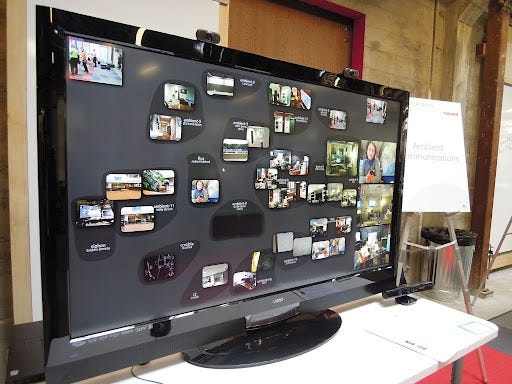
Ambient Communications includes a speech-recognition technology, so that if certain topics come up during a meeting, that site's bubble will grow, to capture your attention. These images are all still pictures, by the way, not continual video streams -- so Ambient Communications doesn't have to be a bandwidth hog. They're updated once second.
The whole thing is one big HTML5 page, so Ambient Communications could run on a Web browser. The idea itself was born out of a hallway conversation at AT&T, Kirk says, so it's a tool meant to re-create the environment in which the tool was created. Think about that for a moment.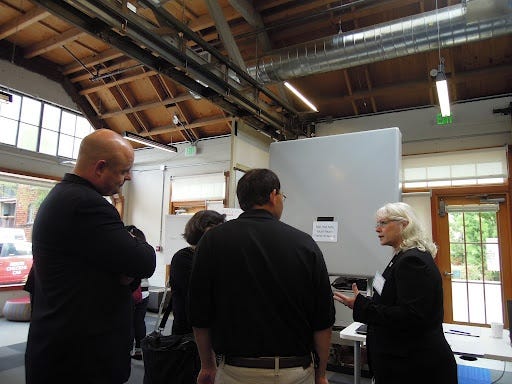
The big gray square is a multibeam antenna for cellphones. AT&T found that the Coachella music festival kept outgrowing its wireless capacity, year after year, so AT&T Labs researchers in Los Angeles came up with this.
It's got five antennas inside, dividing the coverage space radially (think half-a-pizza divided into slices). This method packs more signals into a given range of spectrum. An 18-antenna version is in the works, says Gary Chow (who's in center frame, with his back to the camera). 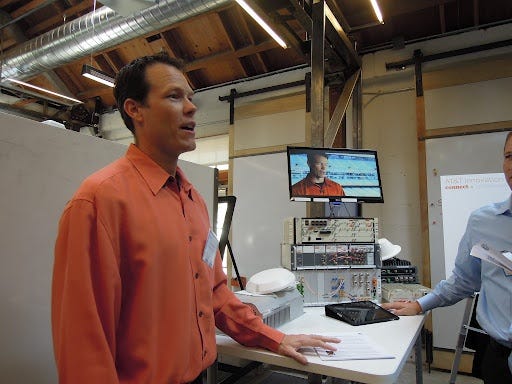
AT&T had Bill Schlough, CIO for the San Francisco Giants, on had to talk about the distributed antenna system (DAS) that's installed at the stadium -- which, by amazing coincidence, is named AT&T Park.
Stadium networking isn't a new concept -- the park has had Wi-Fi from day one, back in 2000 -- but it's still a work in progress and has to be upgraded continually to accommodate the growing data greed of mobile devices.
The network got its biggest challenge in 2010 when the Giants went to the World Series. The problem wasn't the crowd, but the swarms of media, Schlough said. 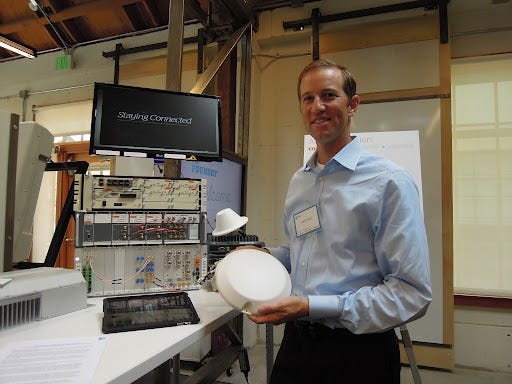
Baseball stadiums have a particular challenge, said Chad Townes, VP of AT&T's Antenna Solutions Group. The antennas are located at the back of each stadium section and direct their beams forwards, towards the field. Baseball seats are typically arranged in a tight arc around home plate, and that means some beams will cross each other and interfere as you move closer to the field.
So, the best seats in the house get the worst coverage. And the field itself is just one big mess of interference, Townes said.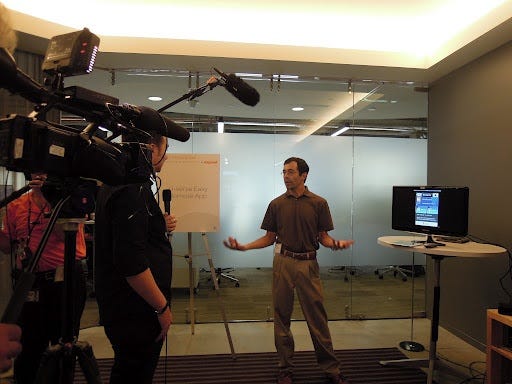
One of the demos that got the most attention -- and yet will be extremely unsurprising for Light Reading readers -- was a tablet-driven TV remote for U-verse.
Part of the gimmick here was that AT&T is suggesting the idea for the visually impaired. Did we say "visually impaired?" Considering how confusing TV remotes can get, these oversized buttons look like they'd be good for pretty much anybody who hates their remote.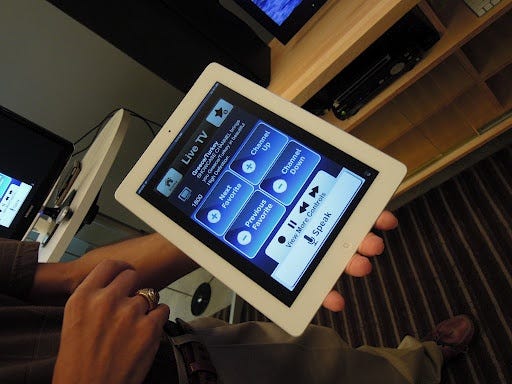
The main difference here is that "speak" button. You can use it to verbalize a search, saving lots of button-pushing. Of course, if talking to your tablet makes you feel like an idiot, maybe this isn't the app for you.
The real purpose here was to show off two APIs that developers can tap: a U-verse API and a relatively new speech API. Part of AT&T Foundry's mission is to provide support for letting other companies mess with these APIs and see what they can come up with.
It wouldn't be a Light Reading report if we didn't include some completely random photos -- and some food. Here you go.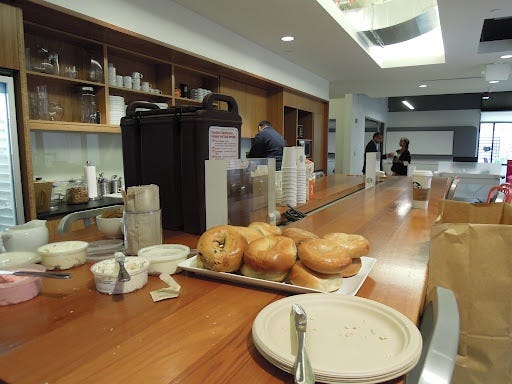
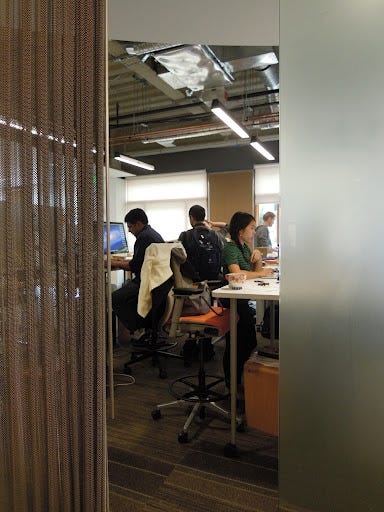

About the Author(s)
You May Also Like




_International_Software_Products.jpeg?width=300&auto=webp&quality=80&disable=upscale)







